| List | Previous | Next |
MERIDA AND CHICHEN ITZA
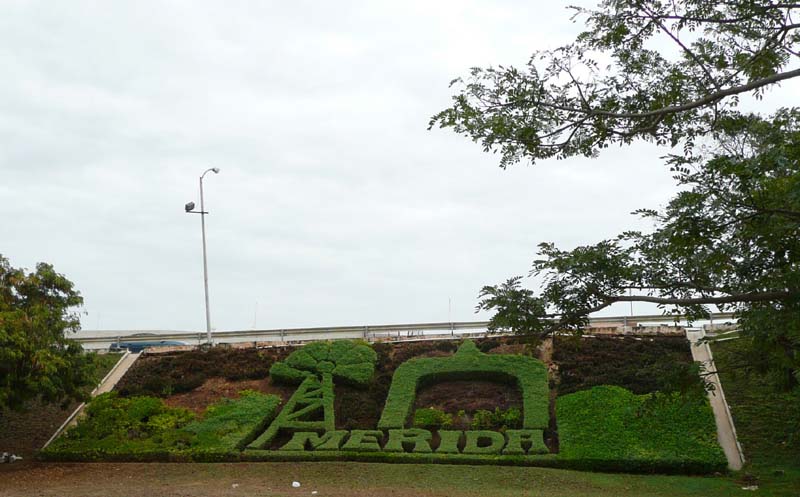
MERIDA
We had an easy drive from the Club Nautica to the campground at Merida, even the roads were in good repair.
Merida is a large sprawling city of a million people. It doesn't have many tall buildings because the ground is so hard and it is difficult to construct good foundations. It is the capital city of the state of Yucatan. It was founded in 1542 by the Spanish Conquistador Francisco de Montejo. It is known as the "White City" because of the large use of white limestone and white paint. We saw colonial, French, Moroccan and Spanish styles in many of the houses, as well as the colorful Mexican styles.
Merida is said to be very safe and friendly which is what we experienced. The main square downtown is surrounded by several market places and good places to eat. Since this is the land of the Maya, many of the plentiful handicrafts are decorated in that style, giving them a bright colorful appearance.
There are some Mayan ruins about half way between Merida and Progresso where you can get excellent, English speaking tour guides.
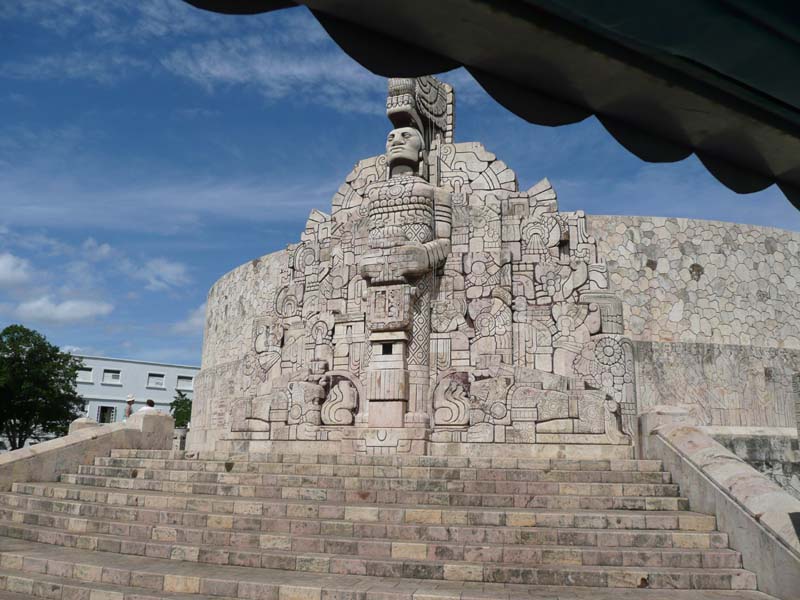
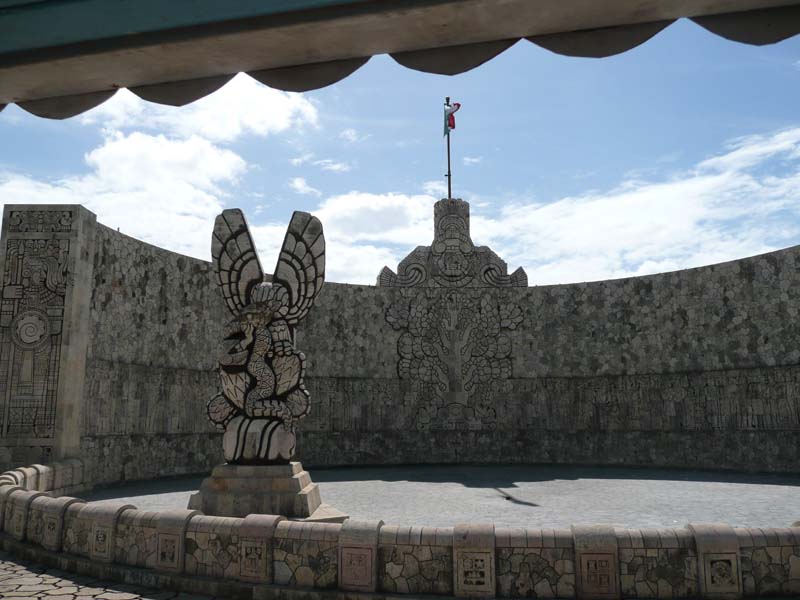
Right: Mayan monument - back
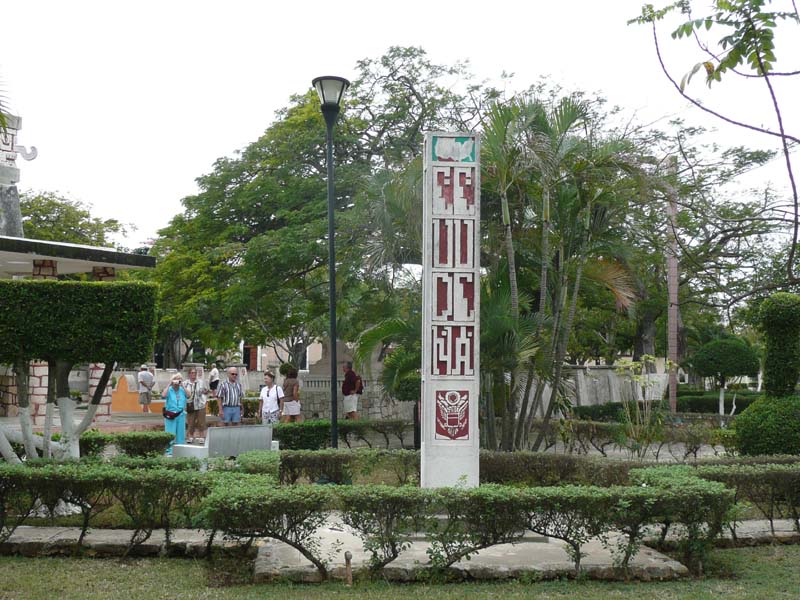
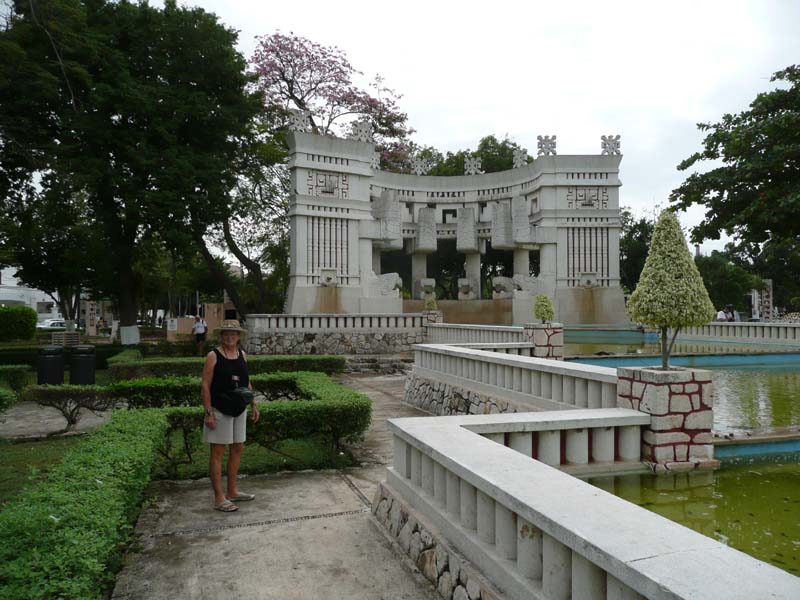
Right: The Park of the Americas where there are columns for all the countries in North & South America.
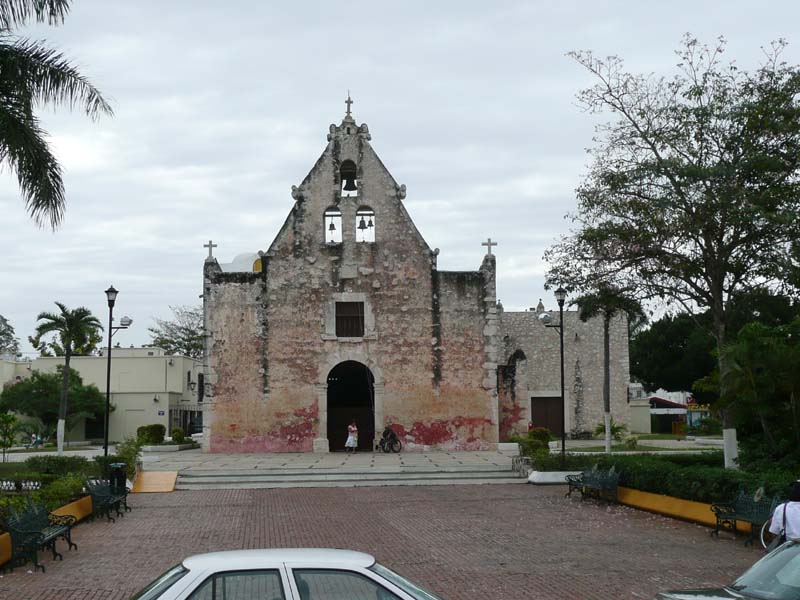
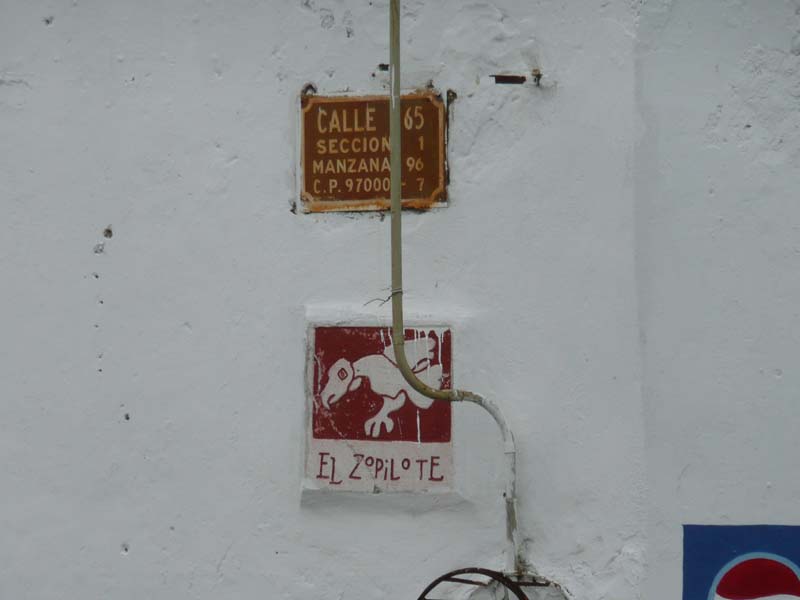
Right: One of the tiles that name the corner. The Mayans learned spanish by these tiles on each corner in the old city.
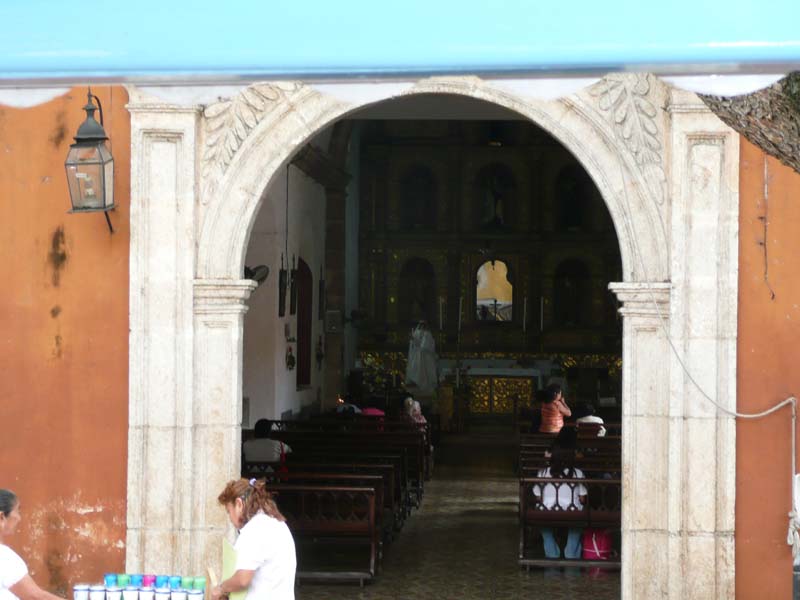
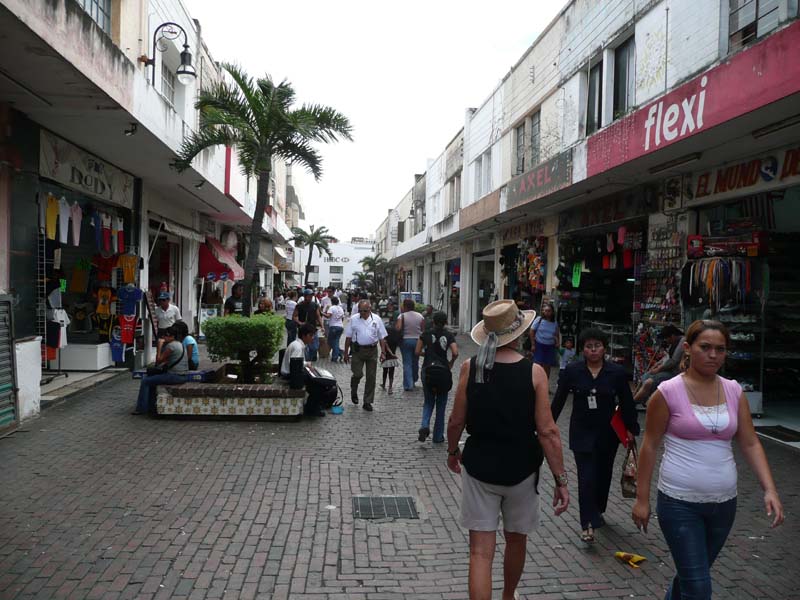
Right: One of the streets in the Handicrafts market
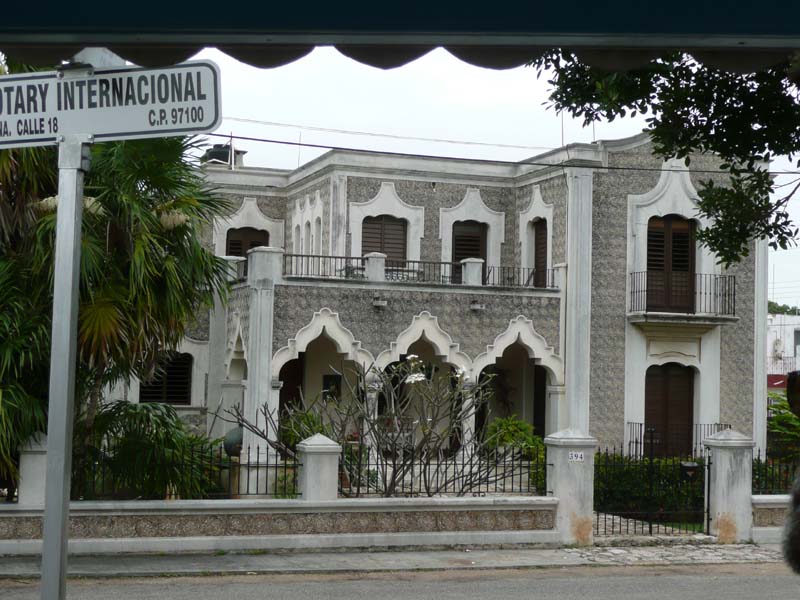
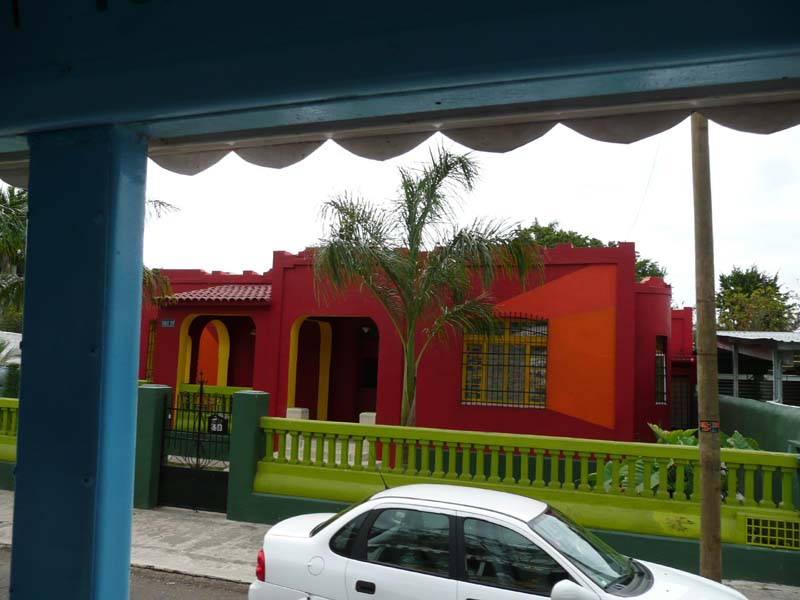
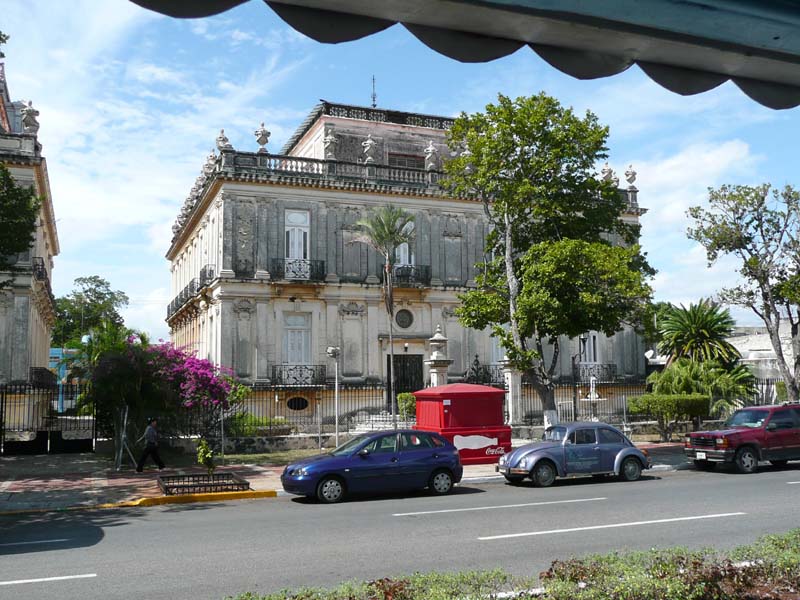
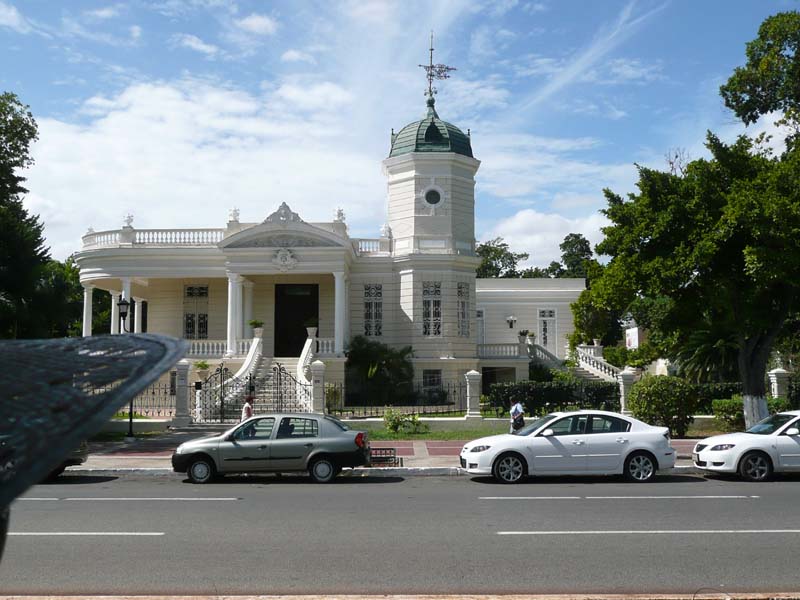
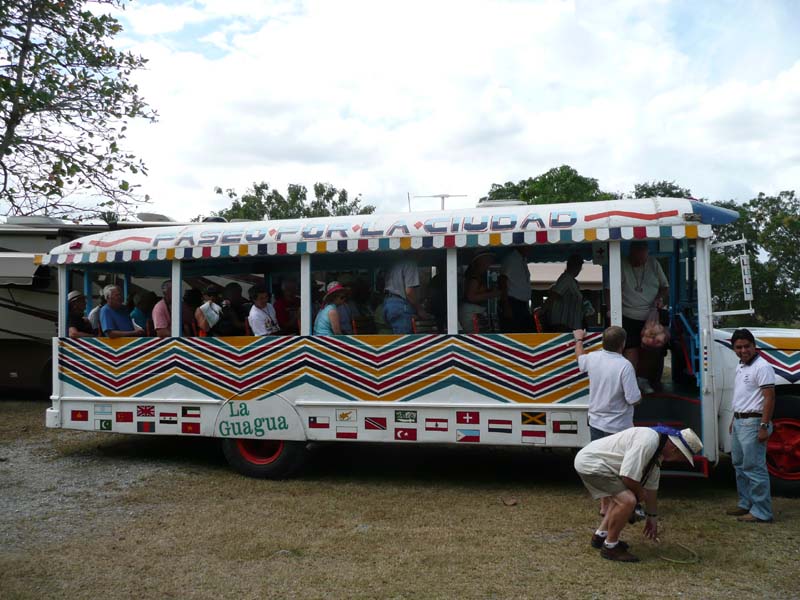
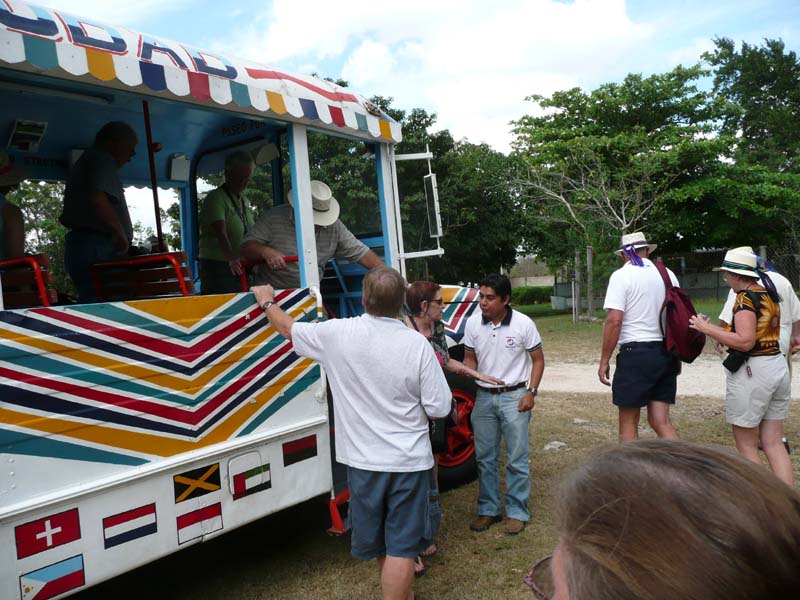
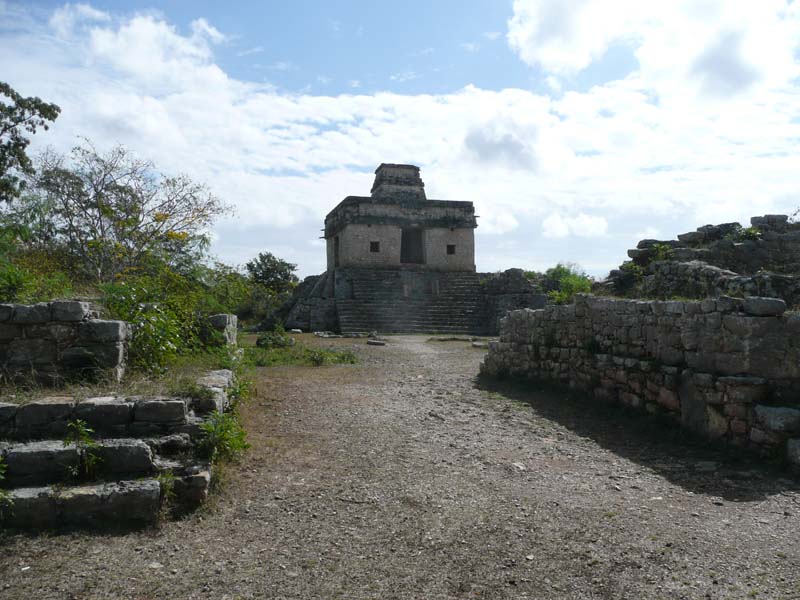
DZIBIL CHALTUN MAYAN RUINS
The main attraction of these ruins is the Temple of the Dolls, an astronomical structure atop a pyramid base. The name derives from the set of dolls found there when it was excavated. The doors and windows allow the rising sun to show through them at the solstices and equinoxes.
This Mayan city had the longest know period of occupation where about 200,000 people and 8,400 buildings were here during its accumulated history. The city was still inhabited by the Maya when the Spanish arrived in the 1500's and artifacts have been unearthed here that date from 700-800 A.D.
Most of the Mayan cities got their water from cenotes, underground rivers that abound in the area. Cenote Xlakah is a beautiful freshwater pool just off the side of the main plaza. It was undoubtedly the freshwater source for the city and perhaps the reason the Maya originally chose this location to build.
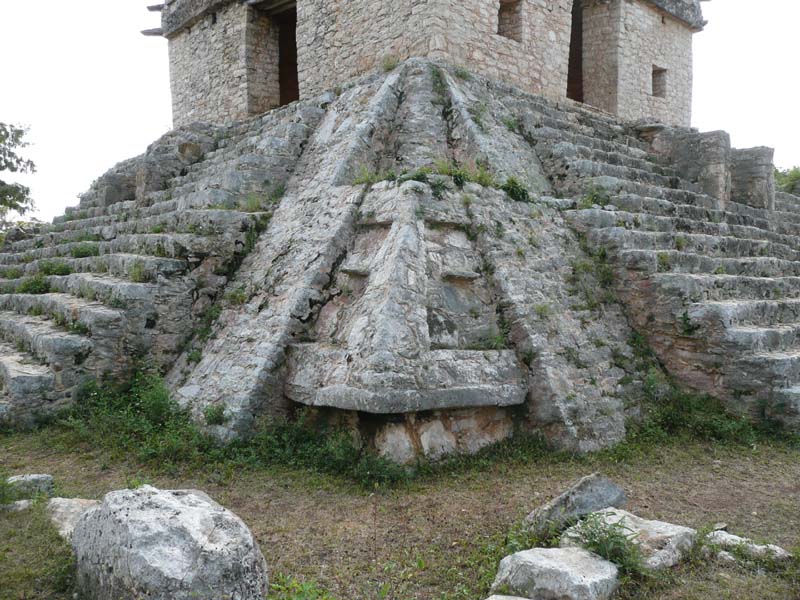
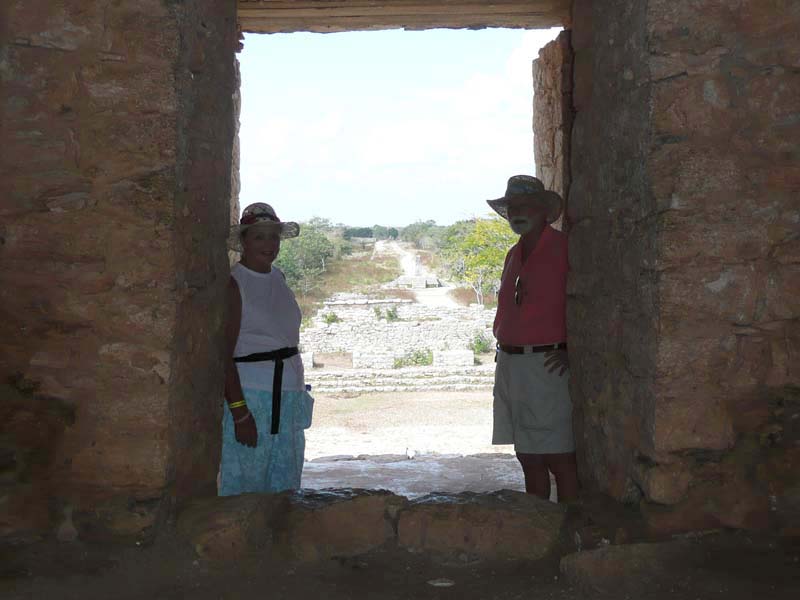
Right: Windows for passage of the sun's light. The sun would rise in the center of this window on the equinoxes.
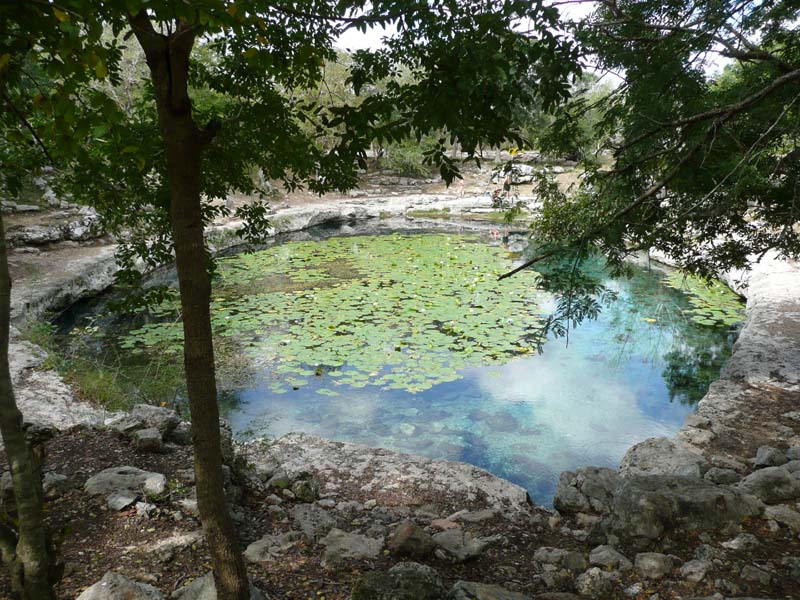
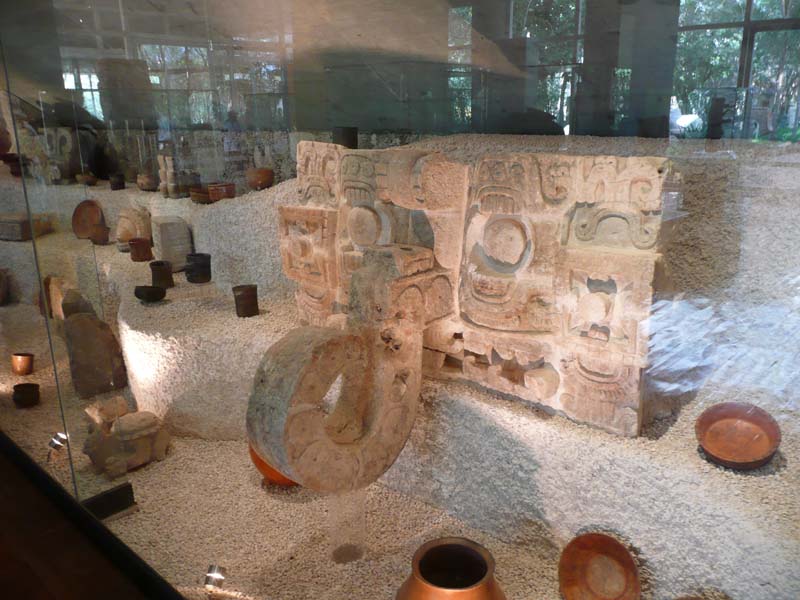
Right: These panels are representative of the Mayan Gods.
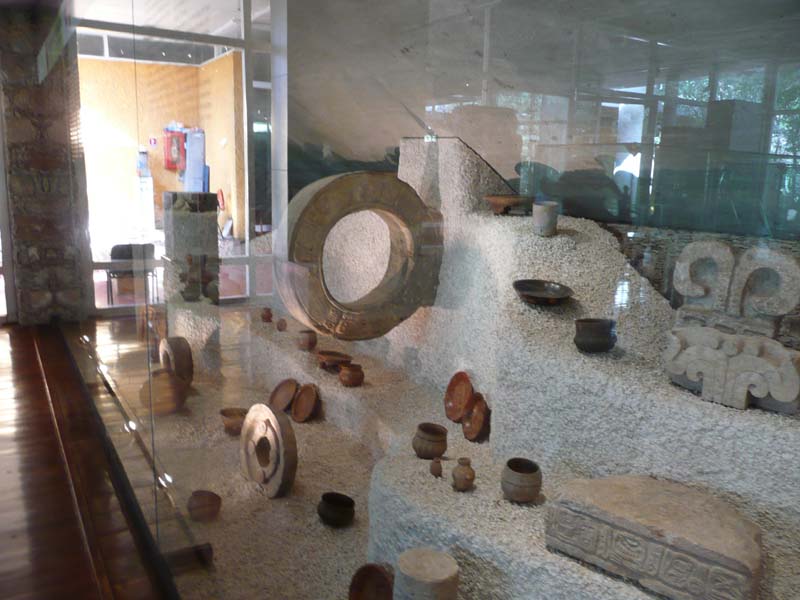
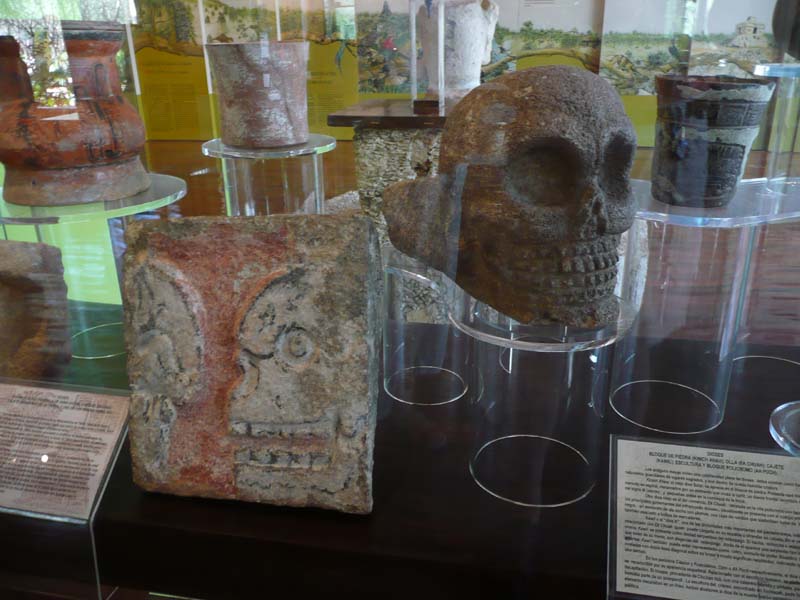
Right: Carvings showing the style and the coloring of statues and wall panels
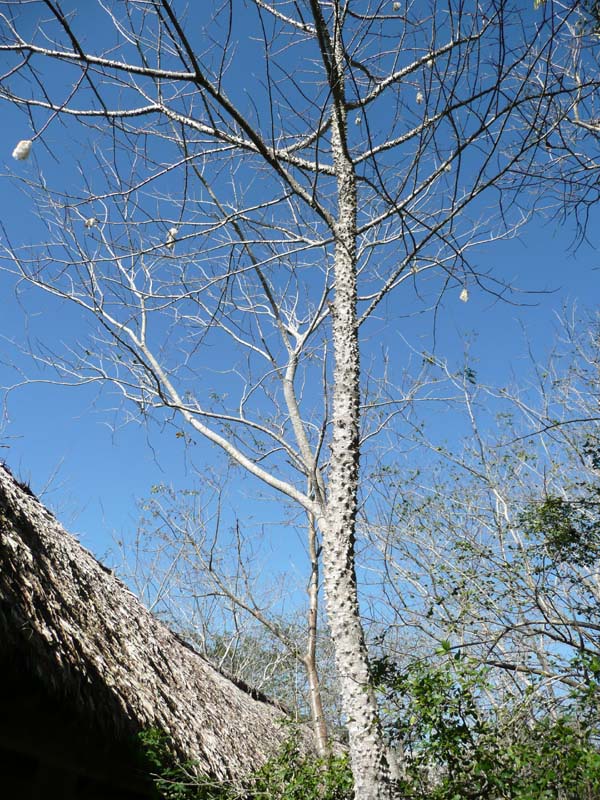
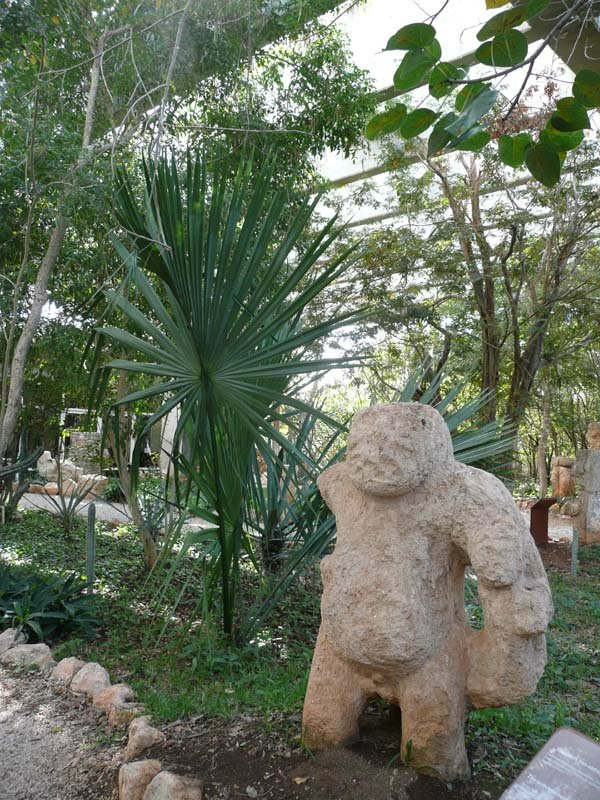
Right: Palm tree used to make Panama hats
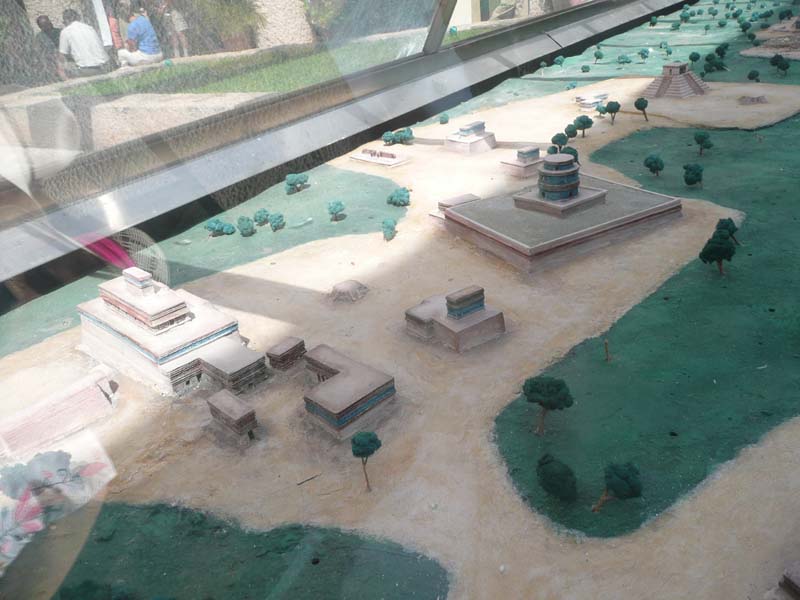
CHICHEN ITZA - THE MAYAN CITY
The Maya lived in a place where the land was flat, having risen from the sea, and was therefore mostly limestone. This land did not have rivers and lakes and the Maya got their water from cenotes, where most of their cities were built. This made rain very important and their main god was the Rain God. Chichen Itza means "the mouth of the well of the Itza", referring to the famous sacred well.
The original city was built in a different architecture than the one constructed after the Toltec fused with the Maya. The blocks are better fitted and less destruction has occurred by the encroachment of the jungle. The model at the right shows what it looked like.
These are links to websites that describe Chichen Itza
wikipedia.org
mysterious places.com
L.C. Swanson
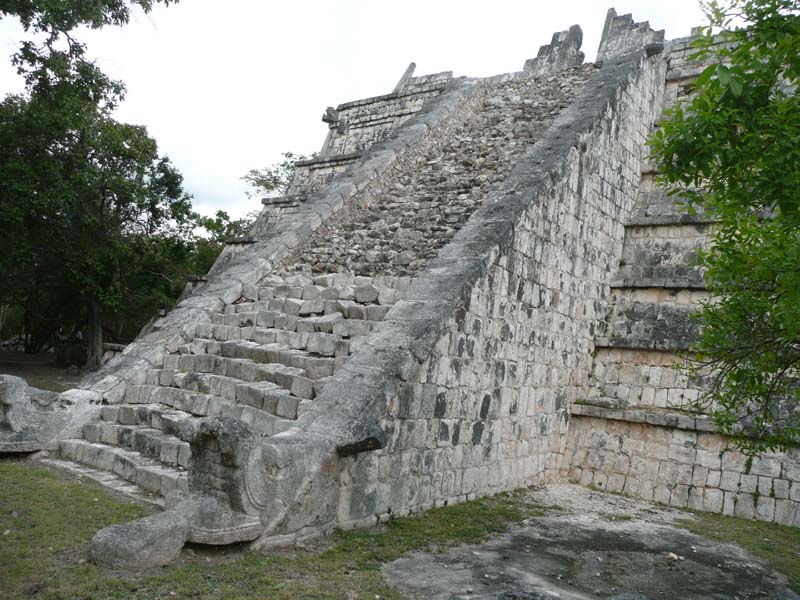
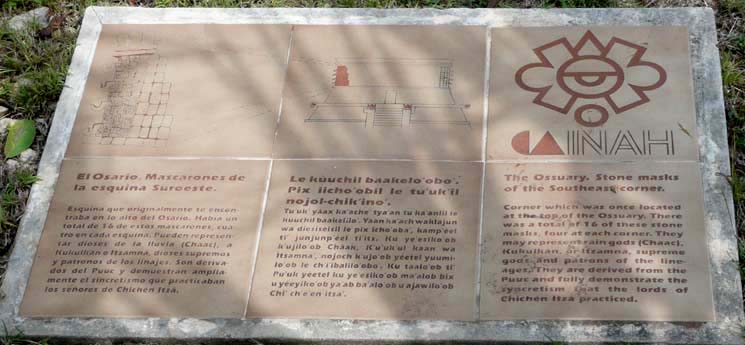
Right: Show location of the corner shown below
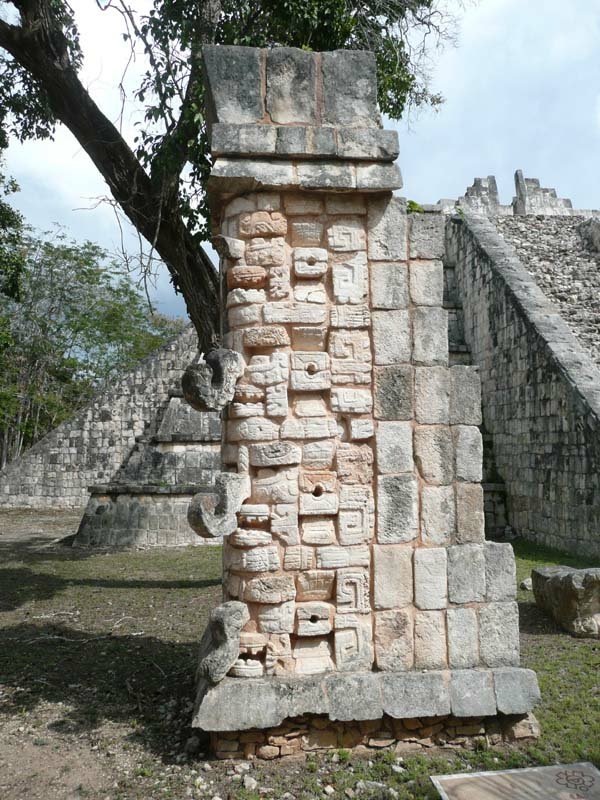
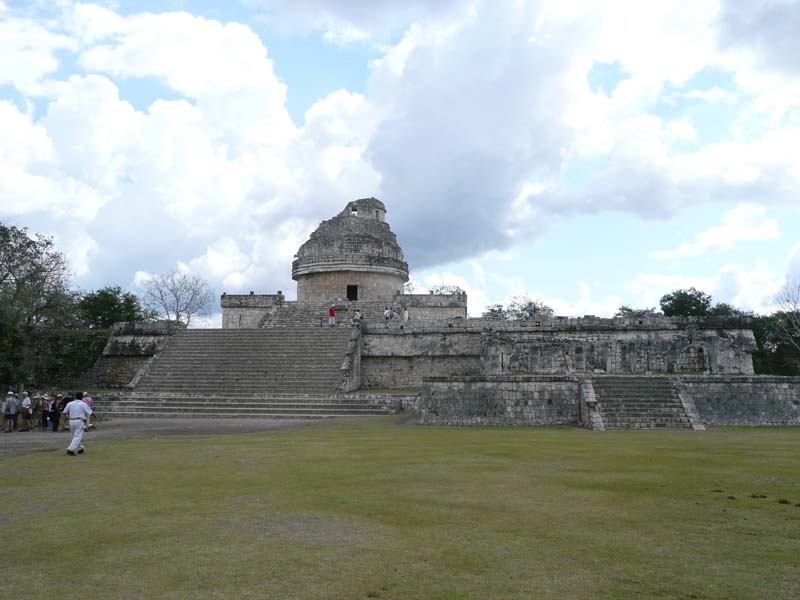
Right: Astronomical Observatory
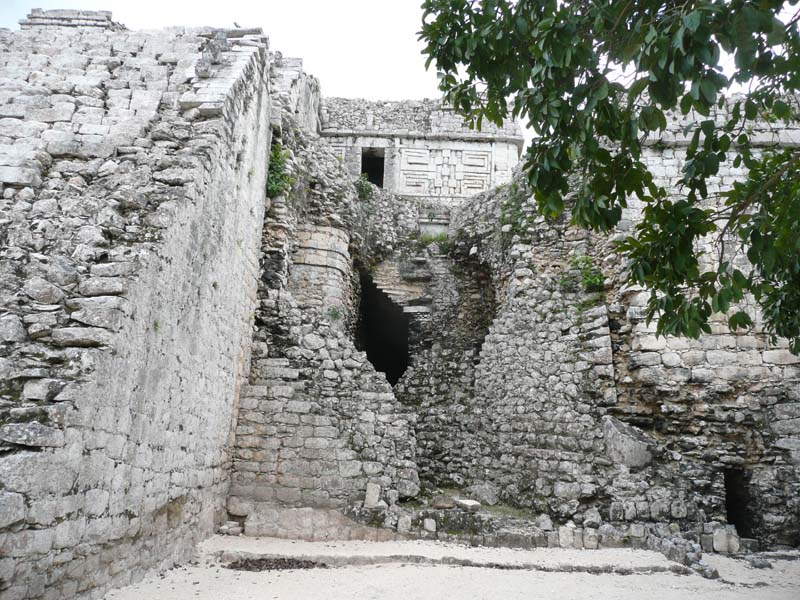
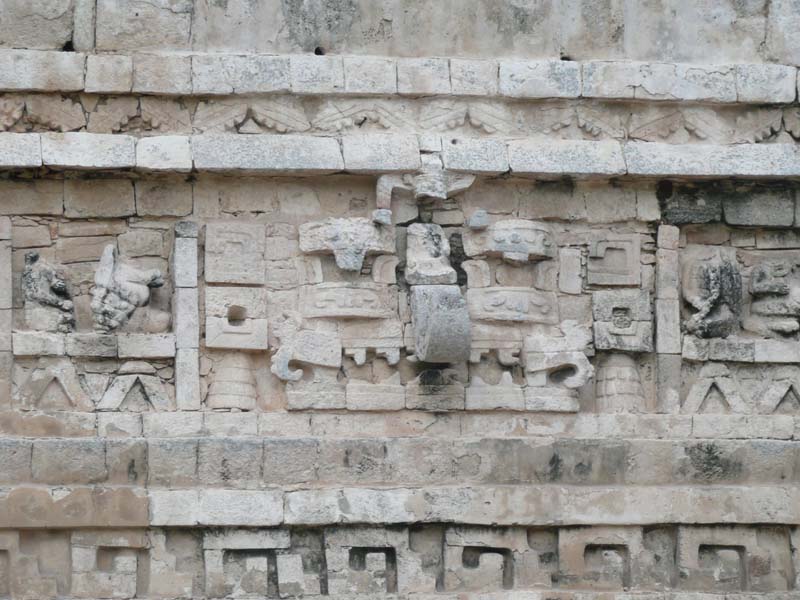
Right: Complex representation of the Rain God
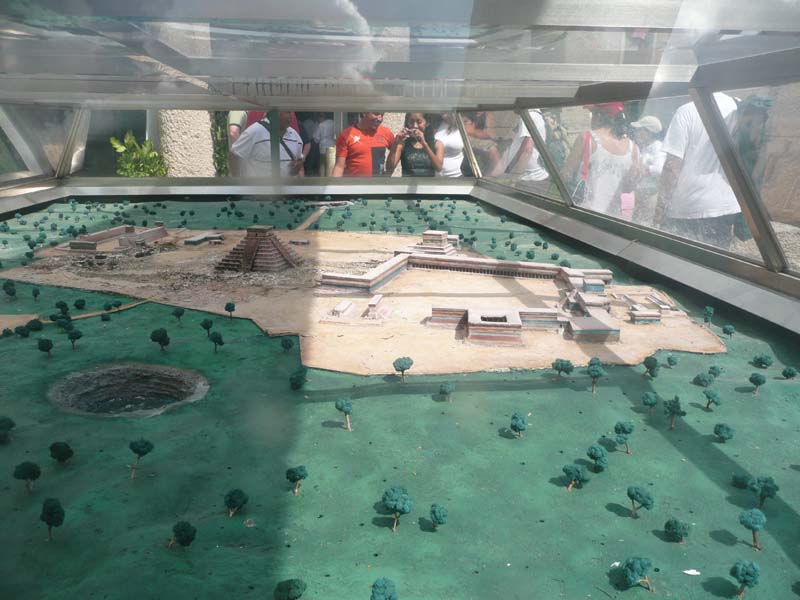
CHICHEN ITZA - THE NEW CITY
This part of Chichen Itza was from when the Toltec fused with the Maya. The result was the style of architecture that shows both the sun god, from the Toltec and the rain god, from the Maya. This fusion, it is supposed, occurred when the Toltec ventured down from the north where they had rivers, lakes and lots of water and they worshiped the sun.
Chichen Itza covers about 15 sq. Km and has 15 ball game courts including the largest ever found, shown on the left side of the model.
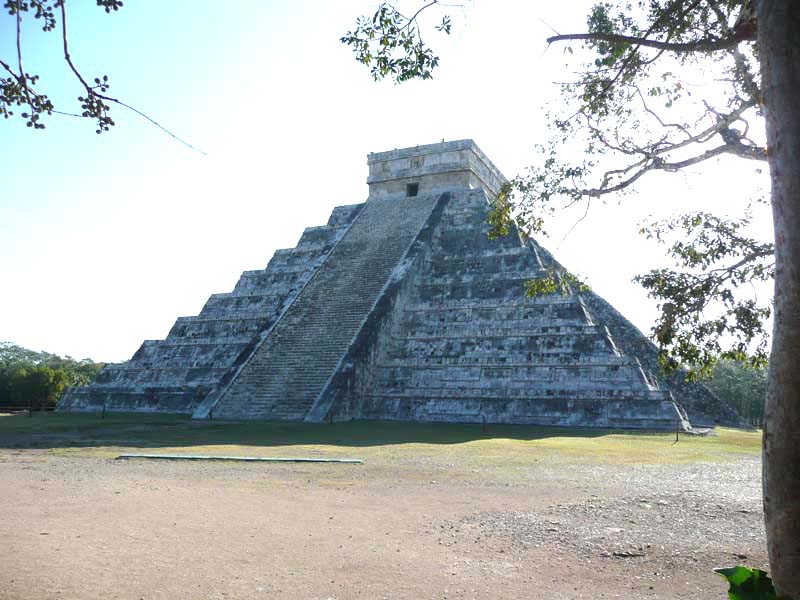
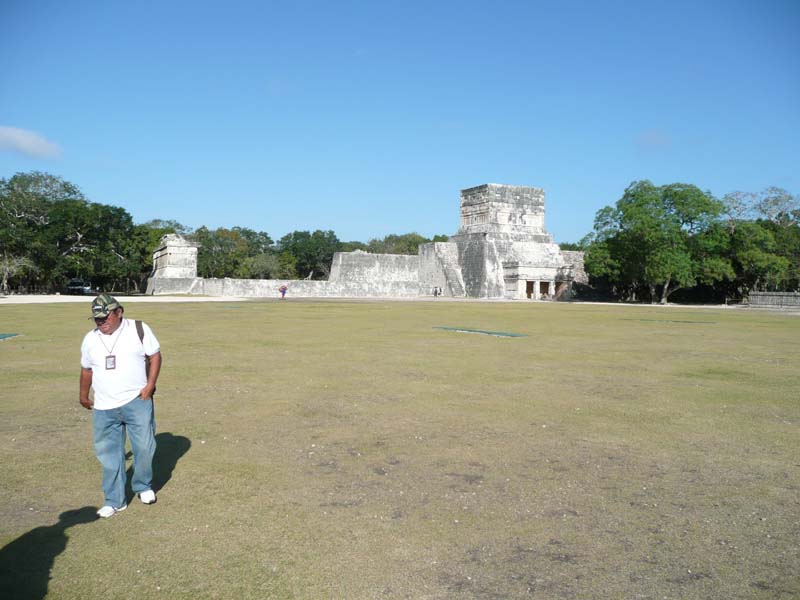
Right: Looking at the Ball Court
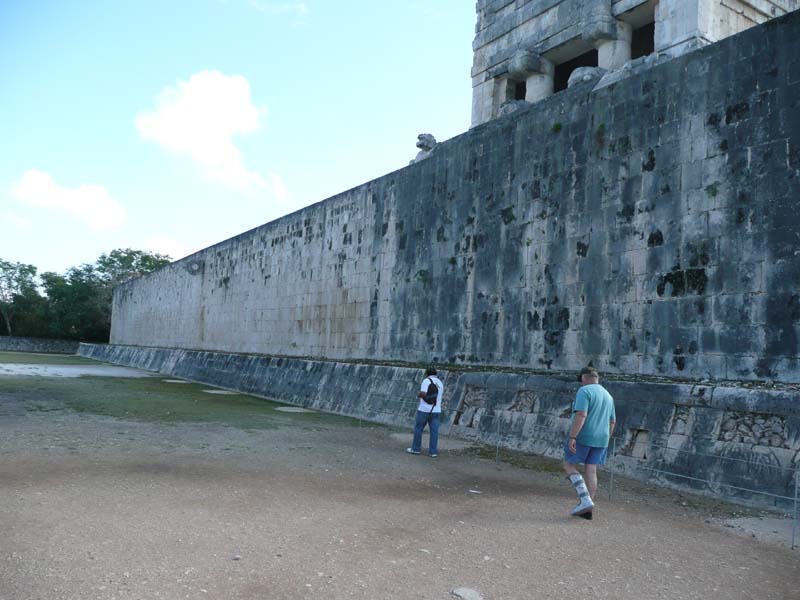
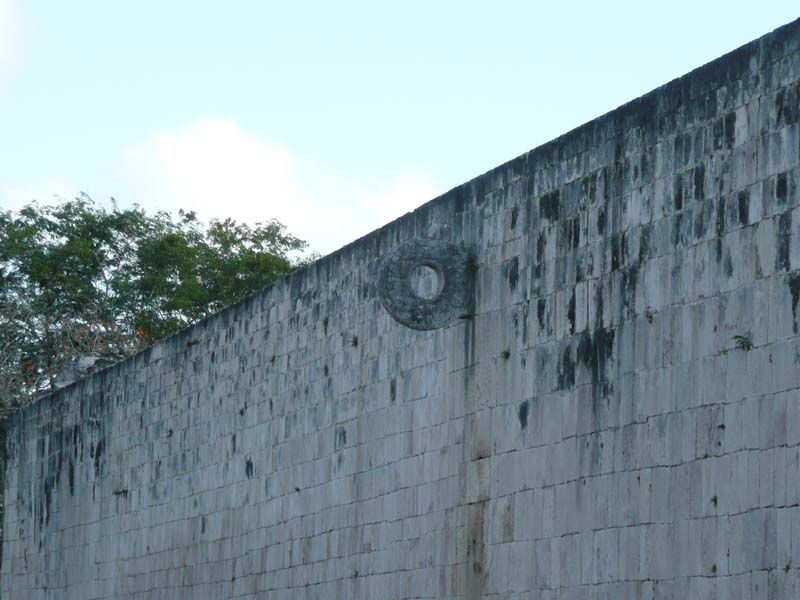
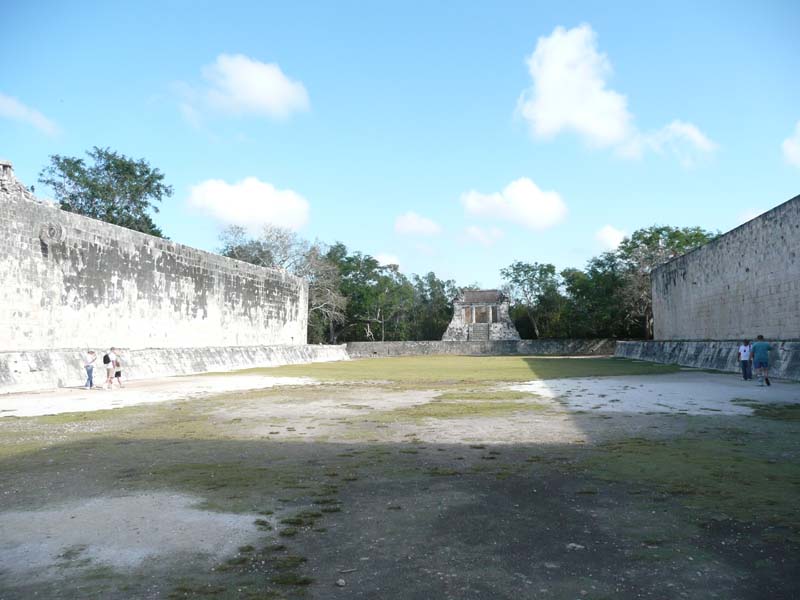
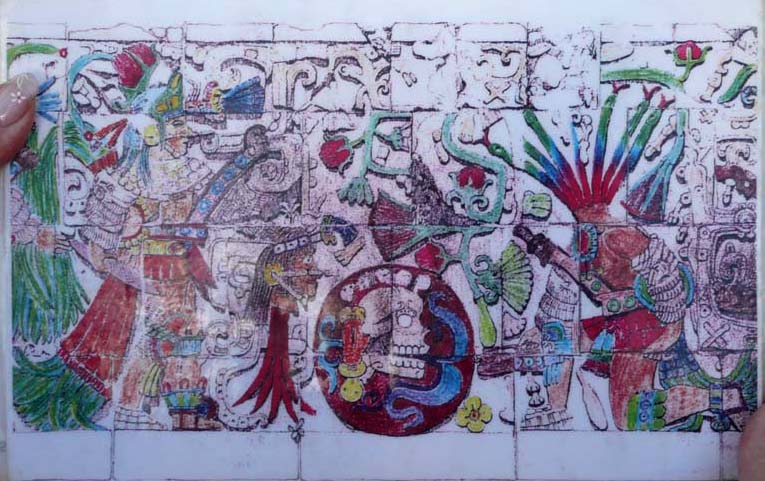
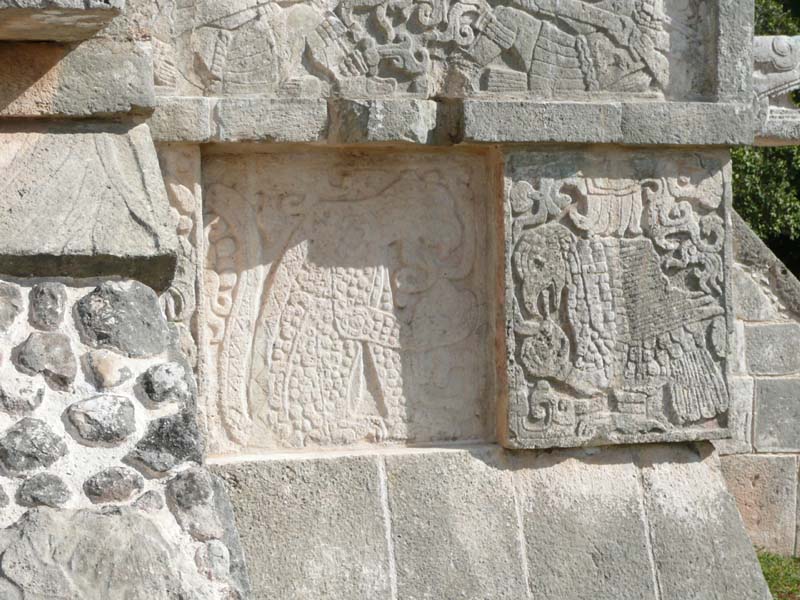
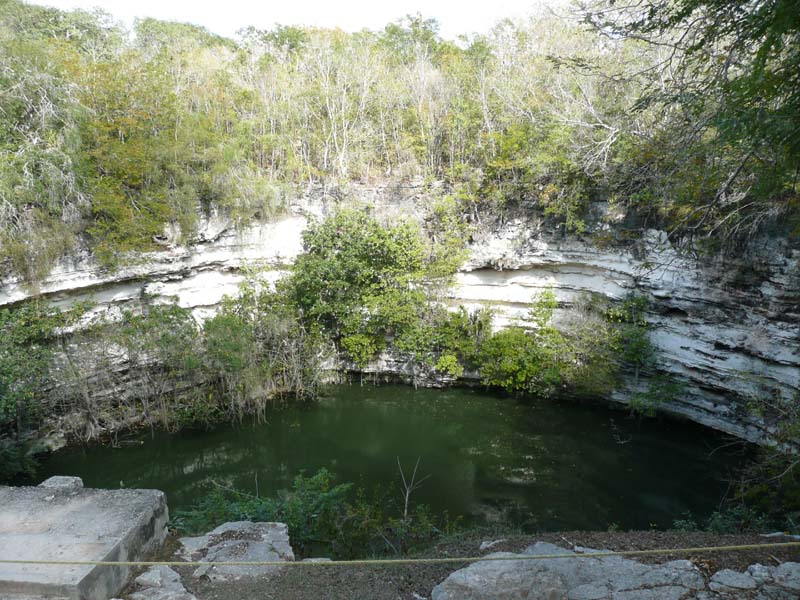
Right: Sacred Pool cenote where the sacrifices and offerings were performed
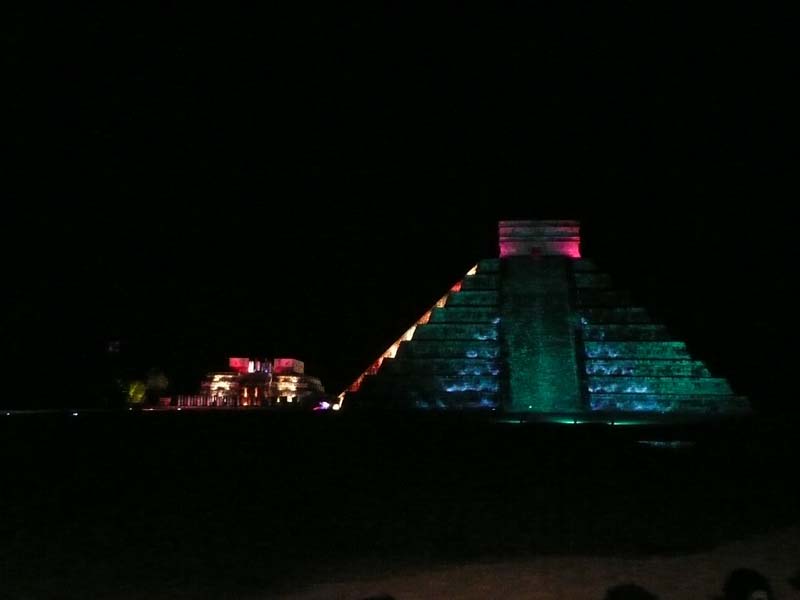
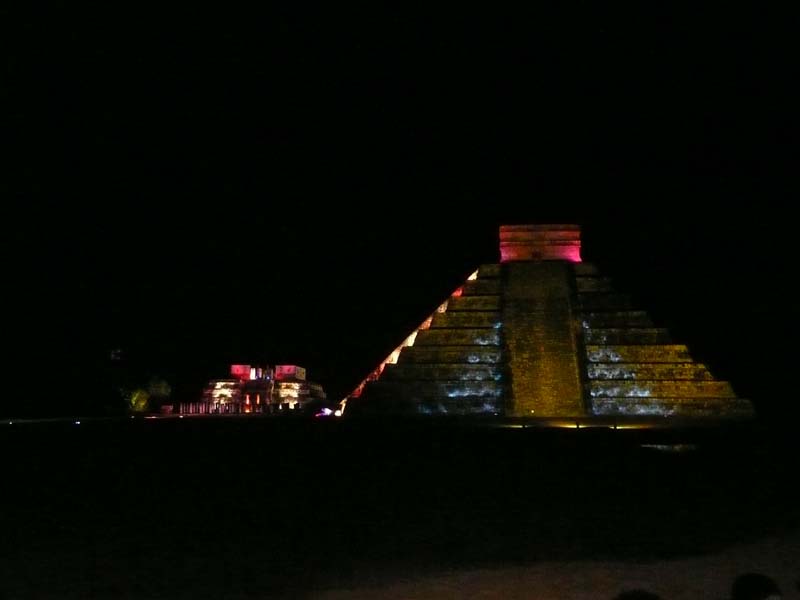
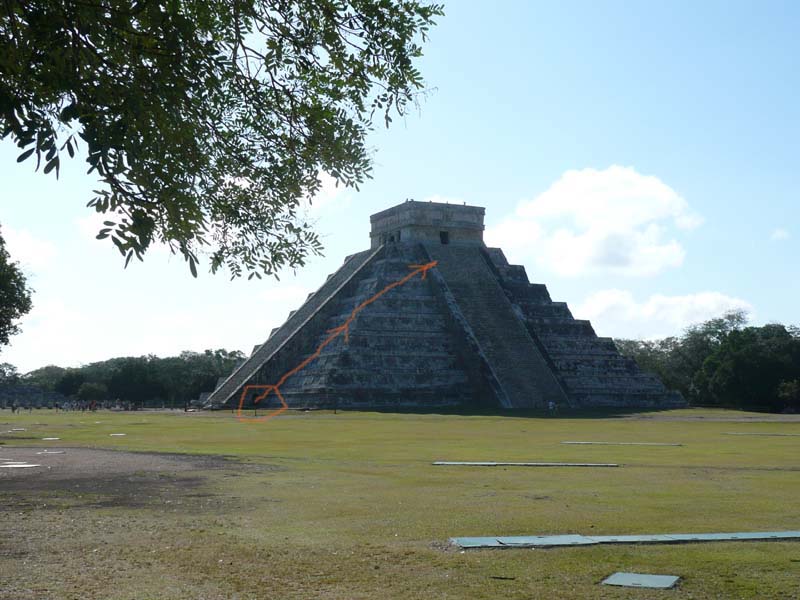
THE SECRET ROOM
We were given an opportunity by one of the guides to visit the "secret room" in the temple of El Castillo that contained the Kukulcan's Jaguar Throne and the sculpture of the Chac-Mool inside the Outer Room of the Inner Temple. This is accessed via an entrance shown on the picture to the right. After entering the door behind the Snakes Head we had to climb stairs in a tunnel as shown, to a secret room under the top of the pyramid. There we were able to view the Kukulcan's Jaguar Throne and the the sculpture of the Chac-Mool, as shown below.
This excursion was done at night, keeping out of sight by approaching from the back side of the pyramid and being sure no one observed us. Very theatrical, but I am sure the guide does this every night he is given the chance, since his price is quite high for this adventure. Anyway, we had a lot of fun doing this and got to see what others only see in the pictures.
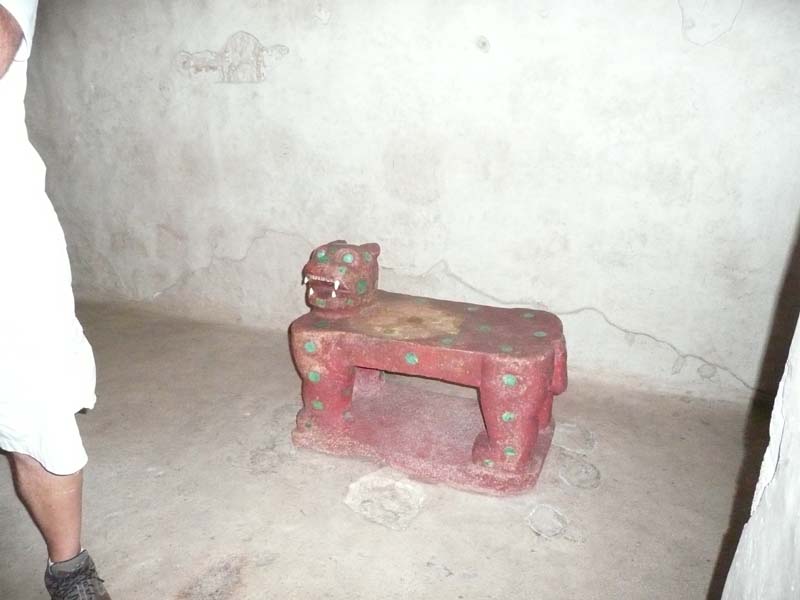
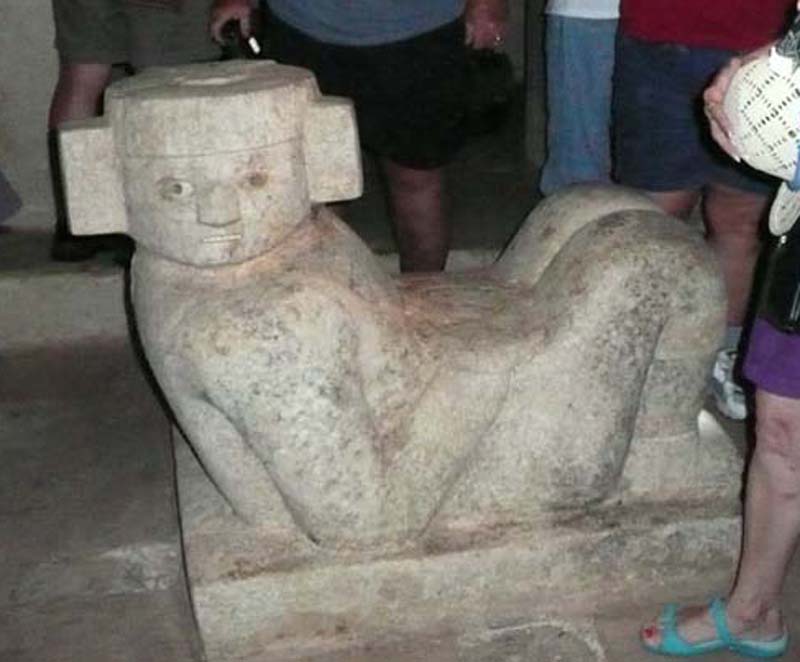
Right: The sculpture of the Chac-Mool inside the Outer Room of the Inner Temple
| List | Previous | Next |